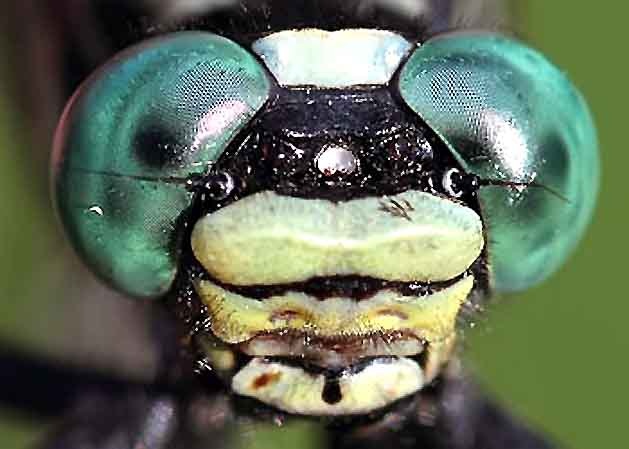 Picture 1: A blue-eyed darner dragonfly. Four dark spots can be seen toward the outer edges and fronts of each wing. Courtesy/Arizona Dragonfly
Picture 1: A blue-eyed darner dragonfly. Four dark spots can be seen toward the outer edges and fronts of each wing. Courtesy/Arizona Dragonfly
 Picture 2: Two highly reflective compound eyes wrap around the sides of its head, and nearly touch one another at the top. Three simple eyes form a triangle between the compound eyes. The middle eye of the three appears white because of reflecting light. The other two eyes appear black and are on either side of the white eye. Two short antennae are visible near them. Minnesota Dragonfly. Courtesy/Jeffrey Fischer
Picture 2: Two highly reflective compound eyes wrap around the sides of its head, and nearly touch one another at the top. Three simple eyes form a triangle between the compound eyes. The middle eye of the three appears white because of reflecting light. The other two eyes appear black and are on either side of the white eye. Two short antennae are visible near them. Minnesota Dragonfly. Courtesy/Jeffrey Fischer
By ROBERT DRYJA
Los Alamos
A remarkable creature can be seen at Ashley Pond.
It has five eyes. Two of these eyes are huge. They are shaped like a ball cut in half and the halves are on each side of its head. The other three eyes are like dots in comparison. They are located between and just below the two huge eyes. The two huge eyes are composed of thousands of individual light receptors. They do not focus light but only sense the direction to an object. It can see behind itself as well as in front, given the shape and position of these two large eyes. The three small eyes in comparison only sense how bright or dark the world is around them. There also are two antennas standing up on either side of the small eyes. These antennae evidently sense the direction in which air is moving and so help guide the creature to where it wants to fly.
This creature has a mouth composed of four parts. It has an upper/lower jaw, of sorts. The lower jaw can move up and down and its upper jaw can move up and down as well. Can you imagine how large your mouth would be if you could move your upper jaw upward, the same as your lower jaw can move downward? There are another three sets of smaller jaws. These are inside and behind the upper/lower jaw. They open by moving sideways in comparison to the upper/lower jaw. This is a mouth designed for capturing and grinding up a dinner.
This creature flies but it is not a bird. The doves and ravens around Ashley Pond have one pair of wings that extend sideways when they are flying. This creature in contrast has two pairs of wings. These extend sideways like a bird. It can choose to have one pair move up while the other pair moves down. Depending on the combination of movements, this creature can fly forward/backward, upward/downward, sideways, and even hover.
A bird has two major parts: a head and a body with two legs. This creature has three parts. Its head connects to a central ball. This ball has six legs. A long tail extends back from the end of the ball and is used for breathing. Birds are covered with feathers. This creature has no feathers. Its wings may be transparent sheets, or they may have different colors.
Birds lays eggs and live above water. Ducks and geese at Ashley Pond dive below the surface for a few seconds when they are looking for food. This mystery creature also lays eggs but spends most of its life under water. It may live a few years under water and then emerge to become a flying adult for a few months.
Is this creature an alien from Mars? Is it a new kind of bird that is a result of laboratory radiation mutations? Actually, most people walking by Ashley Pond think it is harmless, colorful and interesting to watch. It is dragonfly—a remarkable insect in the way it lives. Only mosquitoes and other small insects need worry about being eaten by that set of jaws.
Historic Indian communities were impressed by dragonflies. The wings, eyes and size of dragonflies caught their attention. Petroglyph images can be seen throughout the southwest. The Dragonfly Loop Trail in the Gila National Forest near Silver City has a petroglyph that is particularly eye-catching, (see picture 4).
 Picture 3: Smaller jaws can be seen inside and below the large jaw above. Minnesota Dragonfly. Courtesy/Jeffrey Fischer
Picture 3: Smaller jaws can be seen inside and below the large jaw above. Minnesota Dragonfly. Courtesy/Jeffrey Fischer
 Picture 4: A petroglyph of a dragonfly. It is on the Dragonfly Loop Trail, Gila National Forest near Silver City. Courtesy/USDA
Picture 4: A petroglyph of a dragonfly. It is on the Dragonfly Loop Trail, Gila National Forest near Silver City. Courtesy/USDA

